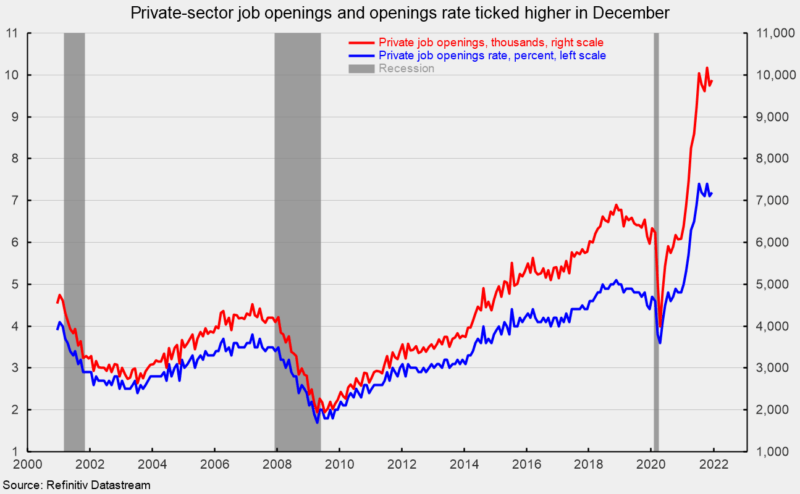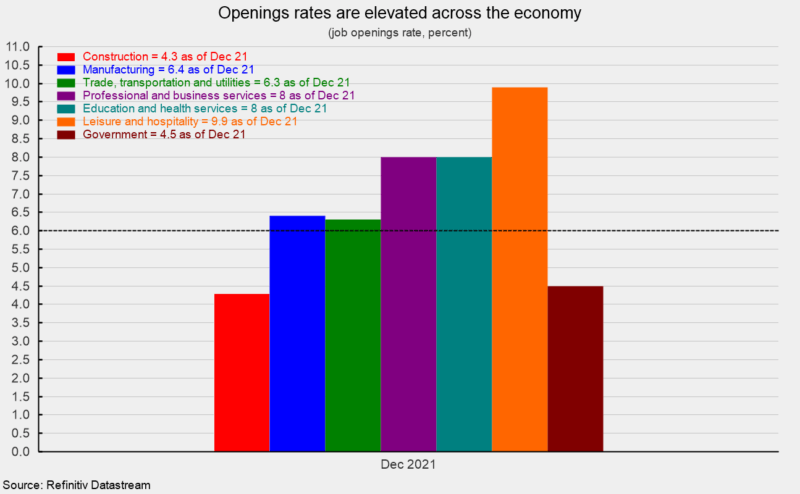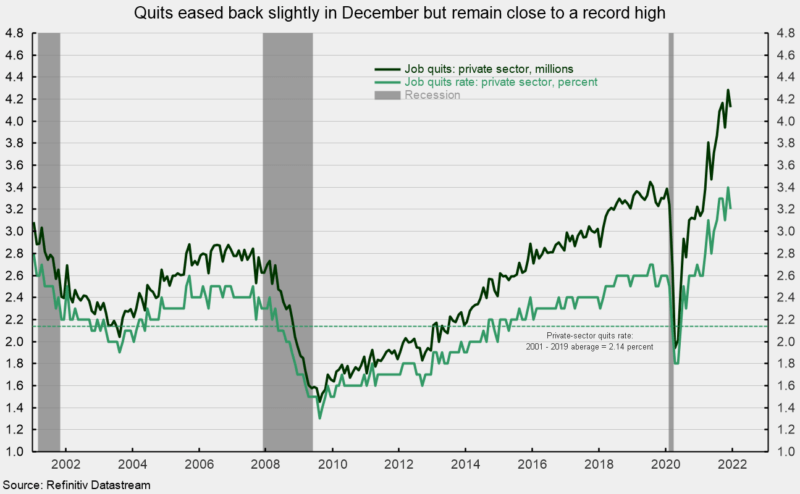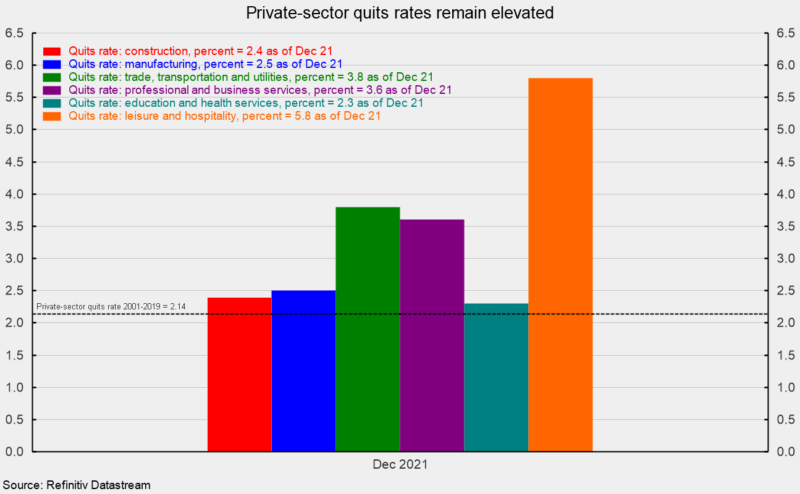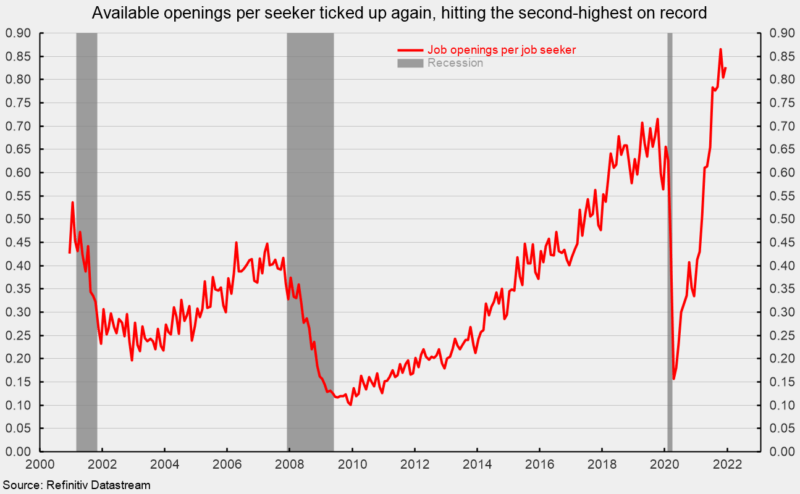Private-Sector Job Openings Totaled Nearly 10 Million in December
The latest Job Openings and Labor Turnover Survey from the Bureau of Labor Statistics shows the total number of job openings in the economy rose to 10.925 million in December, up from 10.775 million in November. The number of open positions in the private sector increased to 9.882 million in December, up 129,000 from 9.753 million in November, and is the third highest on record (see first chart).
The total job openings rate, openings divided by the sum of jobs plus openings, was unchanged at 6.8 percent in December while the private-sector job-openings rate rose to 7.2 percent from 7.1 percent and was just below the record-high 7.4 percent (see first chart).
Four industry categories have more than 1.7 million openings each: education and health care (2.067 million), professional and business services (1.875 million), trade, transportation, and utilities (1.868 million), and leisure and hospitality (1.716 million).
The highest openings rates were in leisure and hospitality (9.9 percent), professional and business services (8.0 percent), education and health care (8.0 percent), manufacturing (6.4 percent), and transportation, and utilities, trade (6.3 percent; see second chart).
The number of private-sector quits eased slightly to 4.129 million, down from a record-high 4.283 million in November. Trade, transportation, and utilities led with 1.044 million quits followed by leisure and hospitality with 906,000 quits, and professional and business services with 776,000 quits (see third chart).
The total quits rate fell to 2.9 percent for the month while the private-sector quits rate dropped to 3.2 percent from a record-high 3.4 percent in November (see third chart).
The quits rates among the private-sector industry groups is still dominated by leisure and hospitality with a rate of 5.8 percent, well ahead of the number two, trade transportation, and utilities, with a 3.8 percent quits rate followed by professional and business services, with a 3.6 percent rate. All the major groups within private-sector quits rates remain above the average over 2001 through 2019 (see fourth chart).
From the worker perspective, labor market conditions tightened again and remained very favorable in December. The number of openings per job seeker (unemployed plus those not in the labor force but who want a job) rose to 0.827 in December from 0.804 in November but still below the record high of 0.866 in October. Prior to the recession, the high was 0.716 in December 2019 (see fifth chart).
Today’s job openings data continue to suggest a very tight labor market. The tight labor market is leading to significant turnover among employees. The outlook for the economy is for continued growth but difficulty hiring and retaining employees continues to be a challenge for employers. Enticing people back into the workforce could help ease supply problems and reduce upward pressure on prices.

